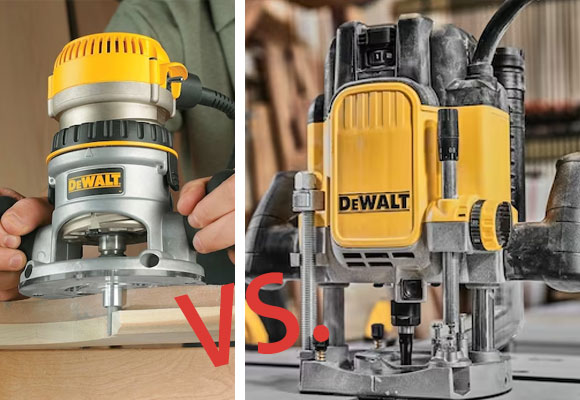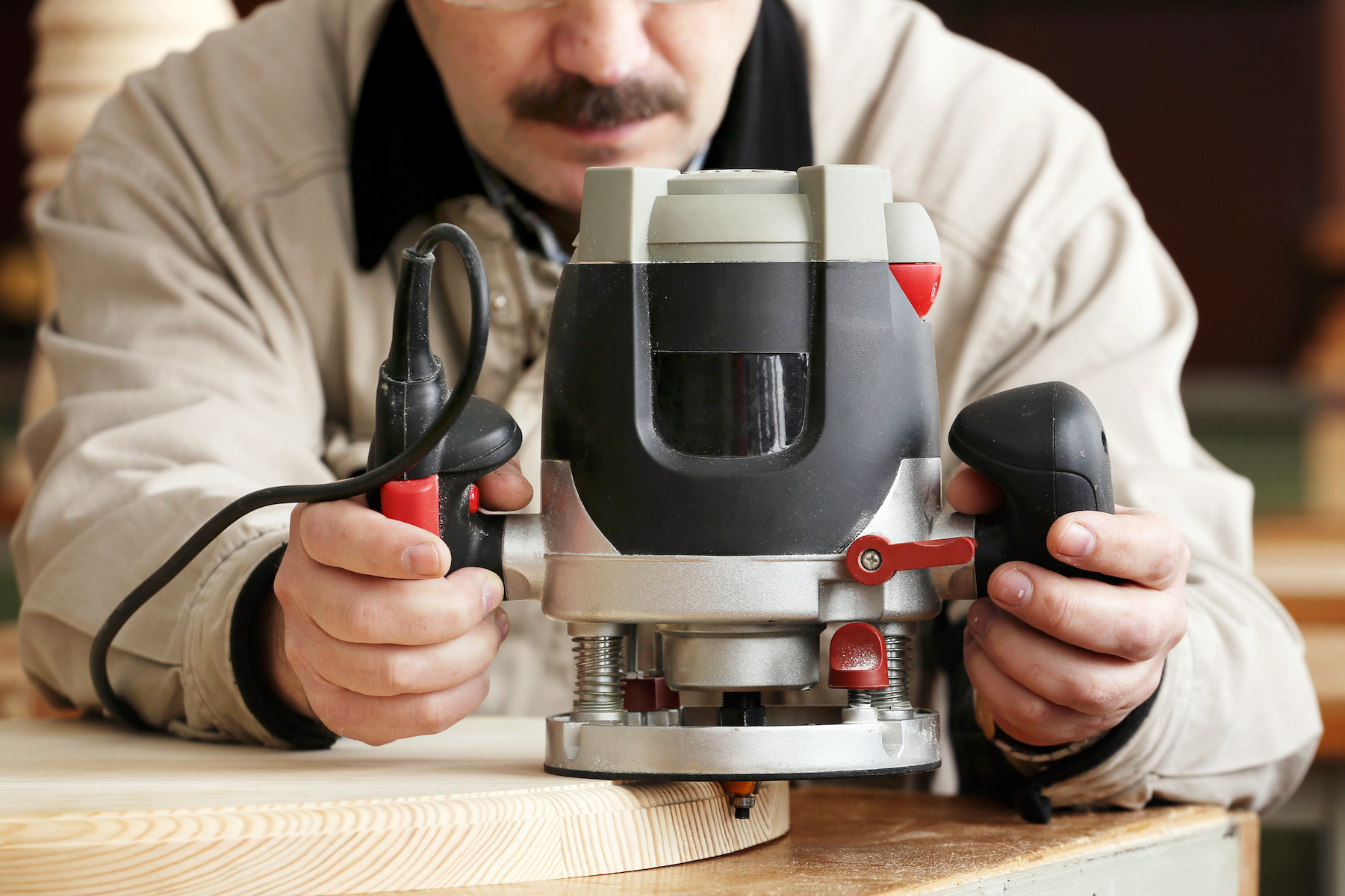Routers are versatile woodworking tools used for hollowing out an area in a piece of wood, plastic, or metal. The primary distinction between router types lies in how the cutting bit is positioned and adjusted relative to the workpiece, leading to two main categories: fixed-base and plunge routers.
Fixed-Base Routers
With a fixed-base router, the cutting depth is set by adjusting the position of the motor (and thus the bit) relative to the base before the router is turned on. Once set, the bit remains at that fixed depth throughout the operation unless manually readjusted with the power off.
Key Characteristics & Uses:

- Edge Profiling: Ideal for tasks like creating decorative edges (roundovers, chamfers, ogees) along the perimeter of a workpiece.
- Dadoes and Grooves from an Edge: Efficient for cutting grooves or dadoes that start from the edge of the material.
- Router Table Mounting: Often preferred for mounting in a router table due to their simpler mechanism and consistent bit exposure.
- Stability: Generally offers a lower center of gravity, which can contribute to stability for edge work.
Advantages: Simpler design, often lighter and more compact than plunge routers. They can be easier to set up for repetitive edge work and tend to be very stable when guided along an edge or fence.
Disadvantages: Not suited for starting cuts in the middle of a workpiece (e.g., mortises or internal cutouts) without pre-drilling. Depth adjustments are less convenient, requiring the motor to be stopped.
Plunge Routers
A plunge router features a base that is spring-loaded, allowing the motor (and bit) to be moved up and down along two vertical posts. The user can position the router over the workpiece and then "plunge" the spinning bit down into the material to a preset depth. Most plunge routers have an adjustable depth stop, often a multi-position turret, for precise, repeatable cuts at various depths.
Key Characteristics & Uses:
- Starting Cuts Mid-Material: Excellent for mortises, stopped dadoes, inlay work, and template routing where the cut begins away from an edge.
- Controlled Depth: Offers superior control over the depth of cut, including the ability to make incremental passes for deep cuts.
- Safety: The bit can be retracted above the base when the router is not actively cutting or when positioning, which is a safety benefit.
- Template Work: Well-suited for use with guide bushings for intricate pattern and template routing.
Advantages: Highly versatile, especially for cuts that don't start at an edge. Precise depth control and the ability to lift the bit clear of the work easily. Safer for certain operations due to bit retraction.

Disadvantages: Can be bulkier and have a higher center of gravity than fixed-base routers, potentially making them feel less stable for some edge operations. The plunge mechanism adds some complexity.
Key Differences Summarized
- Cut Initiation: A fixed-base router's bit is set to a specific depth before starting a cut, typically from the edge of the material. A plunge router allows the bit to be lowered into the material at any point on its surface.
- Depth Adjustment: Fixed-base routers require the motor to be unlocked and moved to change depth, usually done when the router is off. Plunge routers allow for easy and precise depth adjustments, often with a turret stop system, even during sequential passes.
- Bit Position at Rest: In a fixed-base router, the bit remains exposed at the set depth. In a plunge router, the bit is typically retracted above the base when not actively engaged in a cut.
- Primary Applications: Fixed-base routers excel at edge shaping and operations where the cut begins from an edge. Plunge routers are superior for internal cuts, mortising, stopped grooves, and tasks requiring precise, variable depth control.
Many manufacturers offer routers in kits that include both a fixed base and a plunge base, which can be interchanged with the same motor. This provides the benefits of both types in a single package, offering maximum versatility for various woodworking tasks.









